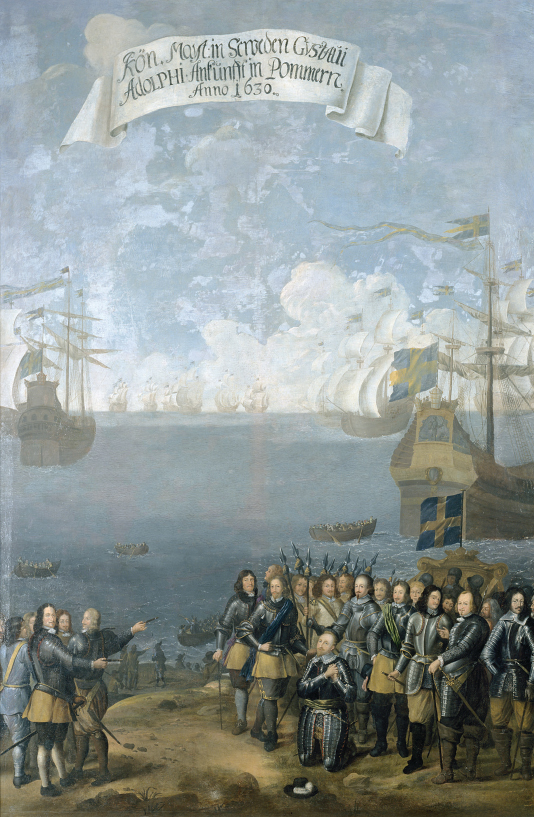Warfare and the Growth of Army Size

The Professionalization of the Swedish ArmySwedish king Gustavus Adolphus, surrounded by his generals, gives thanks to God for the safe arrival of his troops in Germany during the Thirty Years’ War. (Military Academy of Karlberg)
The driving force of seventeenth-century state-building was warfare. In medieval times, feudal lords had raised armies only for particular wars or campaigns; now monarchs began to recruit their own forces and maintain permanent standing armies. Instead of serving their own interests, army officers were required to be loyal and obedient to those who commanded them. New techniques for training and deploying soldiers meant a rise in the professional standards of the army.
Along with professionalization came an explosive growth in army size. The French took the lead, with the army growing from roughly 125,000 men in the Thirty Years’ War to 340,000 at the end of the seventeenth century.2 Other European powers were quick to follow the French example. The rise of absolutism in central and eastern Europe led to a vast expansion in the size of armies. Great Britain followed a similar, albeit distinctive pattern. Instead of building a land army, the British focused on naval forces and eventually built the largest navy in the world.
